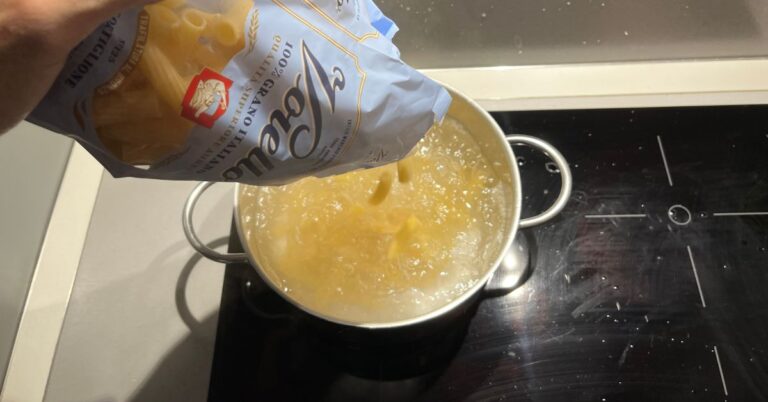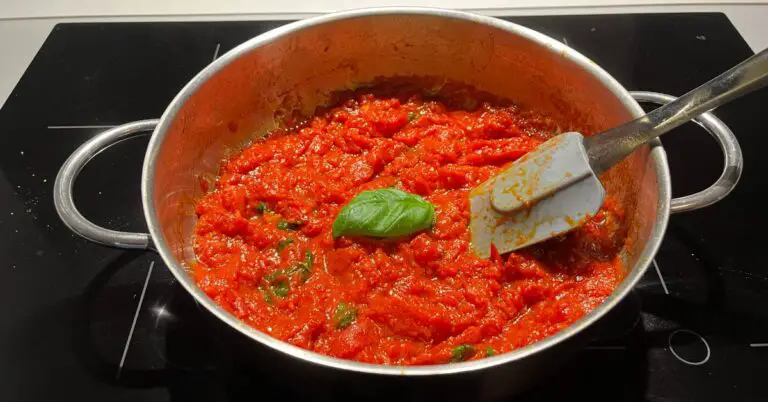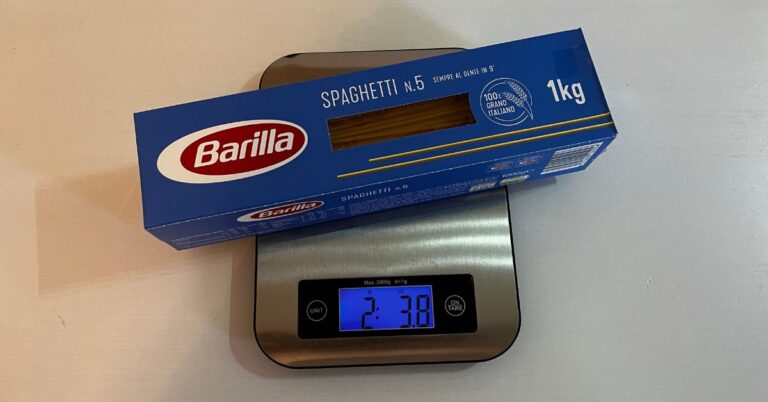In Italy, pasta is taken so seriously that every recipe and situation requires specific portions. I’m not kidding: it all depends on how, where, and when you decide to sit at the table.
Let’s see together how to figure out what is the right amount of pasta to put on the plate based on the situation and the place where we eat it.
A medium portion of pasta as a single dish
Usually, the main Italian meal consists of several courses:
- Starter (not always present);
- first course (pasta, rice, gnocchi);
- second course (meat, fish, cheese, stuffed vegetables or vegetables) and side dish;
- dessert (not always present);
- fruit;
- coffee (usually at the end of the meal).
In this case, it is easy to see why it makes no sense to prepare big plates of pasta that would end up satiating everyone without leaving enough room for the rest.
The first difference, then, is between a one-dish meal and a full meal (as listed above).
If there is a one-dish meal in the meal and it is pasta, one dares even with portions of 100 grams or more; in the case of a multi-course meal on the other hand, one keeps within a range of 70-90 grams per serving.
These references, however, do not apply if we are talking about a pasta soup in broth like pastina, which requires smaller quantities, between 40 and 50 grams; much also depends on the type of broth, which can be meat, vegetable, or legume broth.
A medium portion of fresh and/or egg pasta
Tagliatelle, fettuccine, pappardelle, orecchiette, strozzapreti: these are just some of the many types of fresh egg pasta shapes, and they lend themselves to a multitude of recipes. These are more expensive products than common dry pasta, and are not part of the everyday table: however, they can also be used in ordinary recipes, enriching them with taste and flavor. But how to adjust the portions in such cases? Generally, we keep below 100 grams, going even lower in the case of a broth recipe.
A medium portion of whole wheat pasta
Whole wheat pasta is very popular in Italy, not only for those on a weight-loss diet. Its properties are also great for those suffering from intestinal problems and cardiovascular disease and for those who need to keep their blood sugar at bay. A fairly general rule applies here: all the portions listed above can be increased by 50 grams!
A medium portion of stuffed pasta
Tortelloni, conchiglioni, ravioli, tortellini, even gnocchi: the possibilities of stuffed pasta are endless!
Obviously, each individual component of the dish “weighs,” literally, much more than a simple macaroni, so you need to budget for much larger portions: we are talking about a range between 150 and 250 grams, for the sweet tooth even more! The seasoning and other ingredients that may be present should also be evaluated; usually, these are single courses since they are really rich and caloric, but in case seconds and side dishes are also planned, it is better to take a few grams off the scale.
Pasta portion: restaurant VS trattoria
Up to now, I have proposed to you very homely scenarios, those that you might encounter going to eat at an Italian’s home.
What happens within the domestic walls is easily replicable in small places, such as trattorias and neighborhood osterias or even informal farmhouses that you can visit in the more rural areas of my country: but forget that a restaurant can bring to the table a 250-gram portion of stuffed pasta!
Especially if we’re talking about a city and gourmet restaurant, where the imperative is “tasting,” you can’t expect country trattoria-style binges of big plates of pasta.
It’s all a matter of “personality”: if you love homemade flavors and hearty dishes, then throw yourself into the first Italian trattoria you find on your path and you’ll come out rolling; if, on the other hand, you prefer to try something more exclusive, prepared with high-quality ingredients by chefs of a certain caliber, then my advice is to look for the restaurant that’s right for you.
You can also go for a “middle ground” by reserving a table at the restaurant and, perhaps, ordering larger courses or asking to try two different first courses: reckon that, in high-end restaurants, one course might even correspond to 3 ravioli artfully plated in a very large white plate in which they seem to disappear!
Italian pasta portions VS American pasta portions.
I realize that picking your way through all the “dogma” of Italian-style pasta might initially seem exhausting. Especially if you are an American and you are used to your mega-portions without too much discrimination: I understand that and, I will tell you when I am not at the table with other people and on festive or formal occasions, I too prefer the “big” single dish with which to satiate myself and swallow all the carbohydrates I want.
There remain, however, all the differences that divide us (Italian pride alert!) when it comes to preparation and cooking, choice of ingredients, and, of course, their quality and availability.



![Does canned pasta exist in Italy? [that’s why we hate it]](https://whyitalians.com/wp-content/uploads/2022/12/ravioli-pasta-in-a-can-768x402.jpg)




Hello
I find your blog very helpful, but I have a question
Do you weigh the past before cooking it or after?
for the weight will be different in each case.
Thank you
Hello and thank you, I’m glad I was helpful. Typically pasta in Italy is weighed before cooking, all grams that usually refer to portions of pasta are indicated for dry pasta.